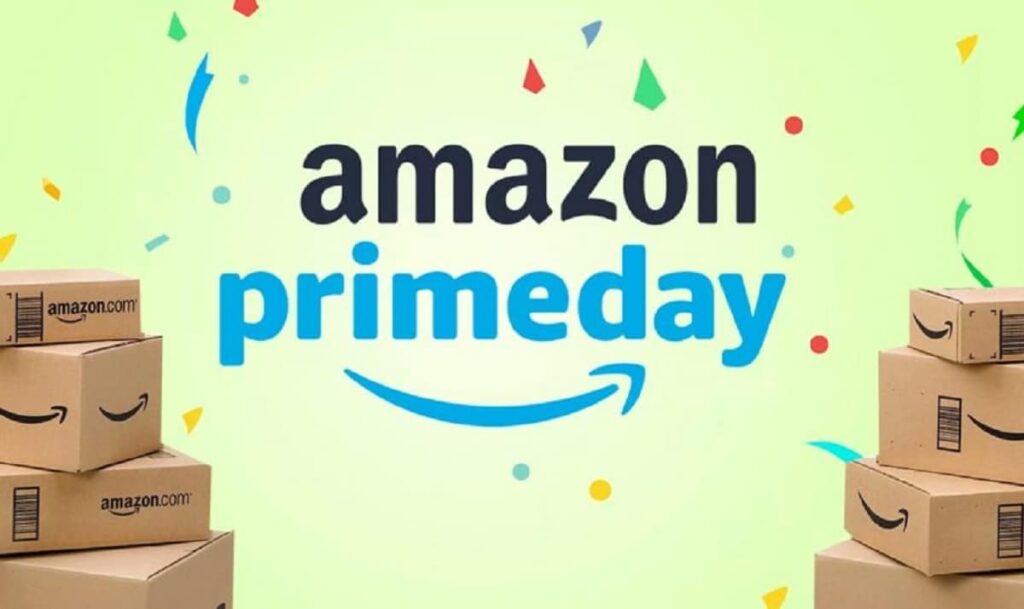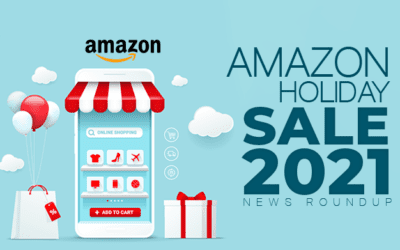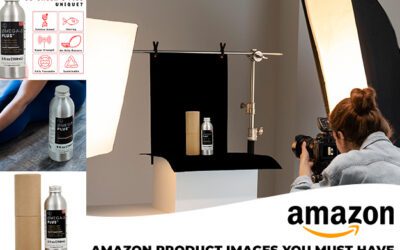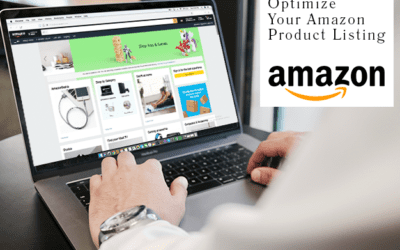
Are you an Amazon seller gearing up for the highly anticipated Amazon Prime Day? As one of the biggest shopping events of the year, Prime Day presents an excellent opportunity to boost your sales and increase brand visibility. To make the most of this event, it’s crucial to have a well-planned and optimized Prime Day strategy. In this blog post, we will explore effective strategies to help you optimize your Amazon Prime Day approach and maximize your success as a seller.
1. Plan Early:
When planning for Prime Day, reviewing your past Prime Day performance is a crucial step. Look at the sales data, customer feedback, and any insights you gained from previous events. Identify the top-selling products and categories during Prime Day, as well as any specific promotions or deals that resonated well with customers. Understanding these trends will help you make data-driven decisions for the upcoming event.
Based on your analysis, determine which products to feature prominently during Prime Day. Focus on items that have performed well in the past or have the potential to be popular among customers. Consider the demand for specific categories or niches and align your inventory accordingly. Ensure that you have enough stock available to meet the expected surge in orders, taking into account the increased traffic and sales during Prime Day. If necessary, consider restocking or adjusting your production schedule to avoid running out of inventory.
In addition to product selection, consider any necessary adjustments to pricing, packaging, or bundling options. Prime Day shoppers are often on the lookout for exceptional deals, so evaluate your pricing strategy to offer competitive prices and attractive discounts. Assess whether you can bundle complementary products together to create value for customers and increase average order value. Also, consider whether you need to update your packaging or create special Prime Day packaging to enhance the overall customer experience.
By planning early and leveraging insights from previous Prime Day events, you can make informed decisions regarding product selection, inventory management, pricing, and packaging. This preparation will ensure that you are well-equipped to meet the demands of Prime Day and maximize your sales potential.
2. Optimize Product Listings:
During Prime Day, the competition among sellers is intense, making it crucial to optimize your product listings to stand out and attract more customers. Start by focusing on your product titles, bullet points, and descriptions. Incorporate relevant keywords that customers are likely to search for during Prime Day. Conduct keyword research to identify popular search terms and include them strategically in your listings. This will improve your visibility in search results and increase the chances of your products being discovered by potential buyers.
In addition to keywords, use compelling and benefit-driven language in your product descriptions. Highlight the unique features, advantages, and benefits of your products to capture the attention of shoppers. Clearly communicate how your products can solve their problems or fulfill their needs. Craft persuasive copy that entices customers to make a purchase.
Visual appeal is equally important. Utilize high-quality images that showcase your products effectively. Invest in professional product photography to ensure that your images are clear, well-lit, and visually appealing. Use multiple images from different angles to provide a comprehensive view of the product. Consider including lifestyle images that show your product in use or highlight its benefits. High-quality images not only help customers visualize your product better but also build trust and credibility in your brand.
Take advantage of Enhanced Brand Content (EBC) or A+ Content if you’re eligible. These features allow you to create more visually engaging and informative product pages. Leverage this opportunity to tell your brand story, showcase additional product features, and provide a richer shopping experience. EBC/A+ Content can help differentiate your brand from competitors and convey a sense of professionalism and quality to potential buyers.
By optimizing your product listings with relevant keywords, compelling language, high-quality images, and enhanced content, you increase your chances of attracting more customers and driving conversions during Prime Day. Remember to continually monitor and refine your listings based on customer feedback and performance data to ensure they remain effective and competitive.
3. Offer Deals and Discounts:
Prime Day is synonymous with amazing deals and discounts, and customers are actively searching for the best bargains. To stand out from the competition and attract shoppers, it’s crucial to offer competitive pricing and enticing discounts. Start by strategically selecting products that have higher profit margins, as this will allow you to offer more significant discounts without compromising your profitability. Focus on popular or high-demand items that are likely to generate interest and drive sales.
Consider leveraging various promotional tactics during Prime Day. Lightning Deals, which are limited-time offers available for a few hours, create a sense of urgency and encourage customers to make a quick purchase decision. Identify products that can be featured as Lightning Deals and set competitive prices to capture shoppers’ attention. Additionally, consider running a “Deal of the Day” promotion, where a specific product is offered at a deep discount for 24 hours. This can generate excitement and drive a surge in sales.
Offering exclusive coupon codes is another effective strategy to entice potential buyers. Create unique coupon codes that provide an additional discount on your products during Prime Day. Promote these codes through your product listings, social media channels, and marketing campaigns to attract shoppers who are actively seeking out discounts.
Adding value to your offers can further entice customers. Consider offering free shipping during Prime Day, as this is a highly desired perk for online shoppers. Free shipping can act as a powerful incentive for customers to make a purchase, especially when they are comparing deals across different sellers. Another option is to bundle related products together and offer them as a package deal. Bundling can increase the perceived value for customers and encourage them to make larger purchases.
By offering competitive pricing, enticing discounts, limited-time promotions, exclusive coupon codes, free shipping, and bundled deals, you can capture the attention of shoppers and motivate them to take advantage of your Prime Day offers. Remember to communicate these promotions clearly in your product listings, advertising, and social media posts to create a sense of urgency and drive conversions.
Read More: Use Amazon Product Photography to Build Your Brand and Grow Sales
4. Boost Advertising Efforts:
To maximize your visibility and reach during Prime Day, it’s crucial to boost your advertising efforts. Increasing your budget for Sponsored Products or Sponsored Brands ads can help you gain more exposure and capture the attention of shoppers actively searching for deals. By strategically allocating a higher ad budget during this high-traffic period, you can increase the chances of your products being seen by a larger audience.
Leverage targeted keywords in your ad campaigns to ensure your ads appear when customers search for relevant products or deals. Conduct thorough keyword research to identify popular search terms and incorporate them into your ad targeting and bidding strategy. This will help you connect with shoppers who are specifically looking for Prime Day discounts and offers.
Craft compelling ad copy that highlights your promotions and unique selling points. Clearly communicate the value and benefits of your products, emphasizing how they stand out from the competition. Use persuasive language to entice shoppers to click on your ads and make a purchase. Consider incorporating Prime Day-specific messaging, such as “Limited-time offer” or “Prime Day exclusive,” to create a sense of urgency and capture the attention of deal-seeking customers.
Regularly monitor the performance of your ad campaigns and make adjustments as needed. Analyze key metrics such as click-through rates, conversion rates, and return on ad spend to evaluate the effectiveness of your ads. Fine-tune your targeting, bidding strategy, and ad copy based on these insights to optimize your advertising efforts and maximize your return on investment.
By boosting your advertising efforts, targeting relevant keywords, and creating compelling ad copy, you can increase your visibility during Amazon Prime Day and effectively capture the attention of shoppers searching for deals. A well-executed advertising strategy will help drive traffic to your product listings, increase conversions, and ultimately maximize your sales during this important shopping event.
5. Optimize Inventory and Fulfillment:
To ensure a successful Prime Day without running out of stock, proper inventory management is crucial. Start by analyzing your sales data from previous Prime Day events and other peak periods to identify trends and estimate the number of products you’ll need. Consider factors such as the popularity of certain products, sales velocity, and customer demand during this time. This analysis will help you make informed decisions when it comes to stocking up on inventory.
Plan ahead and place orders with your suppliers in advance to allow ample time for production and shipping. Keep in mind that lead times may be longer during busy periods, so it’s essential to communicate with your suppliers and ensure they can meet your deadlines. Monitor inventory levels closely as Prime Day approaches and make adjustments to your replenishment strategy if necessary.
One effective way to manage inventory and streamline fulfillment during Amazon Prime Day is by utilizing Amazon’s Fulfilled by Amazon (FBA) program. With FBA, you can store your inventory in Amazon’s fulfillment centers, and they will handle the picking, packing, and shipping of your orders. This allows for fast and reliable shipping, ensuring a positive customer experience. FBA also offers additional benefits such as Prime eligibility and customer service support, which can further enhance your sales during Prime Day.
Consider leveraging Amazon’s inventory planning tools and recommendations to optimize your inventory levels and prevent stockouts. These tools can provide insights into your inventory health, sales forecasts, and suggested reorder quantities, helping you make data-driven decisions and avoid potential inventory issues.
By analyzing sales data, planning ahead, and utilizing Amazon’s FBA program, you can effectively manage your inventory and avoid running out of stock during Prime Day. This will enable you to meet the increased demand, fulfill orders promptly, and provide a seamless shopping experience for your customers.
6. Monitor and Analyze Performance:
Monitoring your performance and sales metrics in real-time during Amazon Prime Day is crucial to stay competitive and maximize your results. Keep a close eye on key metrics such as sales volume, conversion rates, click-through rates, and average order value. This will provide valuable insights into customer behavior, the effectiveness of your promotions, and the overall success of your Prime Day strategy.
Stay agile and be prepared to make real-time adjustments to your pricing and promotions based on customer response and competitor activity. If certain products are not performing as expected, consider adjusting their prices or offering additional incentives to boost sales. Keep an eye on your competitors’ offerings and pricing strategies to ensure you remain competitive throughout the event.
Utilize Amazon’s advertising and reporting tools to gain visibility into the performance of your ads and sponsored products. Monitor the performance of your ad campaigns, keywords, and ad placements, and make necessary adjustments to optimize your advertising efforts.
After Amazon Prime Day, conduct a thorough analysis of your results. Evaluate the success of your promotions, identify top-performing products, and assess the overall impact on your sales and profitability. Look for areas of improvement and opportunities to refine your strategy for future Prime Days or similar shopping events.
Consider customer feedback and reviews received during Prime Day to identify any areas for improvement in your product offerings, customer service, or fulfillment processes. Address any issues promptly and take steps to enhance the customer experience.
By closely monitoring your performance, making real-time adjustments, and conducting a comprehensive post-event analysis, you can gain valuable insights and continuously improve your Prime Day strategy. This iterative approach will help you optimize your future participation in Prime Day and similar sales events, ultimately driving greater success for your business.
Conclusion:
Optimizing your Amazon Prime Day strategy as a seller is crucial for maximizing your success and capitalizing on the massive sales potential. By planning early, optimizing your product listings, offering enticing deals, boosting your advertising efforts, utilizing social media and influencer marketing, optimizing your inventory and fulfillment, and closely monitoring your performance, you can position your brand for success on Prime Day and beyond. Remember, Amazon Prime Day is not only an opportunity to increase sales but also a chance to strengthen your brand presence and attract long-term customers. With a well-executed strategy, you can make the most of this highly anticipated shopping event and elevate your Amazon selling business
Recent Posts
- Mastering Amazon Product Photography: Key Considerations for Optimal Results
- Unlocking Success: The Importance of Amazon Listing Optimization for Increased Sales
- A Guide to Amazon Listing Optimization in 2024
- Capturing Commerce: The Impact of Product Photography on Ecommerce Growth
- A Complete Guide to E-commerce photography, Tips and Tricks





